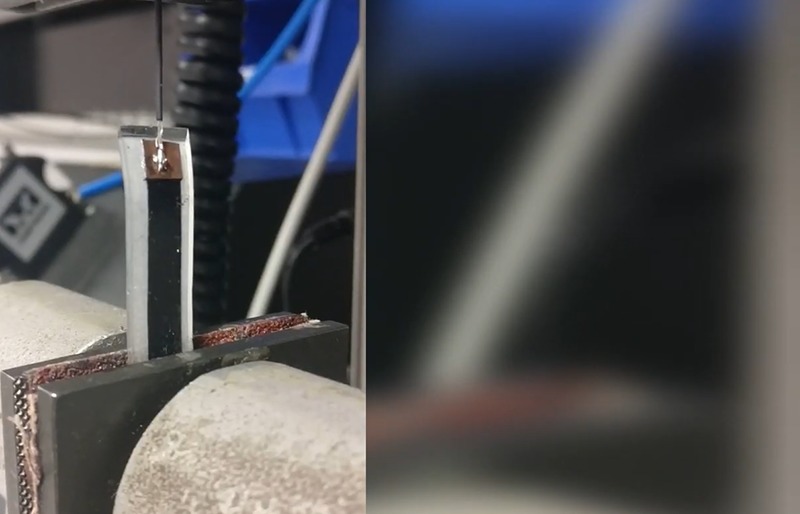
The increased use of digital technologies for improved health care is driving the need for soft sensors. Scientists have long been trying to develop such sensors, but none have made it to market because they cannot easily be integrated with electronic components, like the wires, computer chips and batteries needed to gather, process and send the data the sensor collects.
Read more Scientists Develop Stretchable Wireless Sensor to Monitor Healing of Cerebral Aneurysms
Now, researchers at Imperial College London have developed a way to create a tight bond between rubber and electrical components. They have developed a bond so strong that the stretchy rubber itself breaks before the bond between the two different materials does, reports Hayley Dunning at Imperial College London. The researchers say these soft sensors could be used for wireless, low-cost rehabilitation or health monitoring.
“We hope this method will allow us to make low-cost soft sensors that are reliable and portable, that can be used to monitor people’s health in their own homes,” said first author Michael Kasimatis, from the Department of Bioengineering at Imperial.
“Such sensors could be coupled with a mobile device, such as a smartphone, so that the data they generate can be easily processed and stored on the cloud, which is important for applications in digital healthcare.”

Previously, researchers attempted to bind rubber and plastic using adhesives or clamps, but either came apart under force, or damaged the soft material. The new method instead uses small pieces of metal-coated silicon, which create a chemical bond with the stretchy and squeezy rubber.
The researchers demonstrated how their bonding method can resist the strains of stretching and also tested it out in a few prototype sensors. For example, they used a squeezable ball to monitor progress in hand rehabilitation, and a stretchy band that goes around the chest and monitors breathing.
Read more Stanford Scientists Develop Fully Flexible Wireless Sensors for Tracking Health
“Having successfully demonstrated how this new bonding approach could work and be applied in laboratory prototypes, we now want to take this technology out of the lab and make it available to everyone,” said Dr. Firat Güder, another researcher involved in the study.


